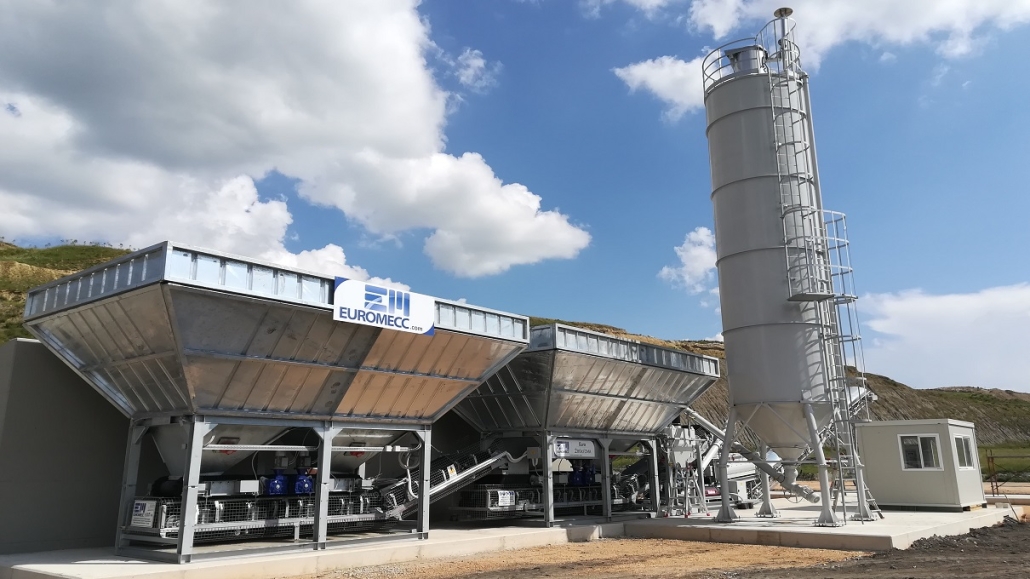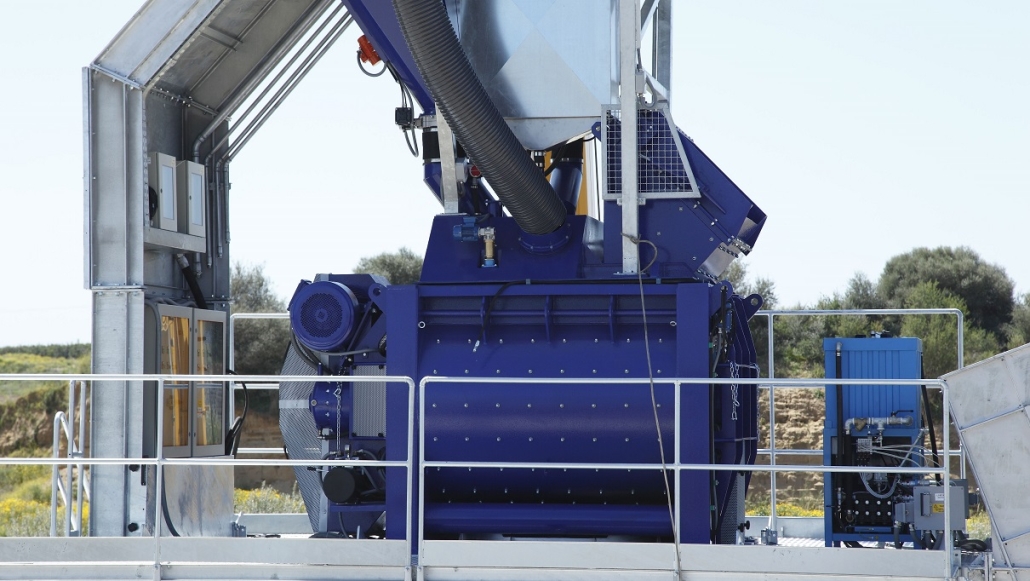
A concrete batching plant is a crucial machine in the production of concrete. Let’s see how it works:
Composition of the system:
Storage hoppers: Here the main aggregates such as sand and gravel are loaded.
Cement Silo: Stores cement until it is needed for production.
Scales: They precisely measure the quantities of the various ingredients, i.e. aggregates, cement, water and additives.
Transport elements: They can be represented by conveyor belts, skips, wagons, etc. and serve to transport the dosed aggregates inside the elements intended for mixing.
Mixing organs: These are static mixers, which can be mainly twin-shaft horizontal or epicyclic vertical, and serve to homogenize the mixture before it is transferred to the concrete mixer. There are so-called dry systems where the mixing function is delegated to the concrete mixer.
Types of dosing systems:
 Dry dosing systems: They dose the dry ingredients separately and mix them only inside the concrete mixer.
Dry dosing systems: They dose the dry ingredients separately and mix them only inside the concrete mixer.
Wet batching systems: They dose all the components and mix them in the plant before transferring them to the concrete mixer.
Operation:
Starting from a given order, the operator enters the recipe and quantity of concrete required via automation software. Starting from this data, the weighing phase of the components begins, starting from the aggregates. These are then conveyed into a mixer where they meet the cement and water also dosed. Depending on the recipe, additives are then inserted with specific times and functions and, if necessary, the water can be corrected to respect a water/cement ratio before completing the mix and transferring the concrete inside the concrete mixer. A typical cycle lasts 90 to 210 seconds.
Our plants guarantee quality concrete with the trust of the Euromecc brand




